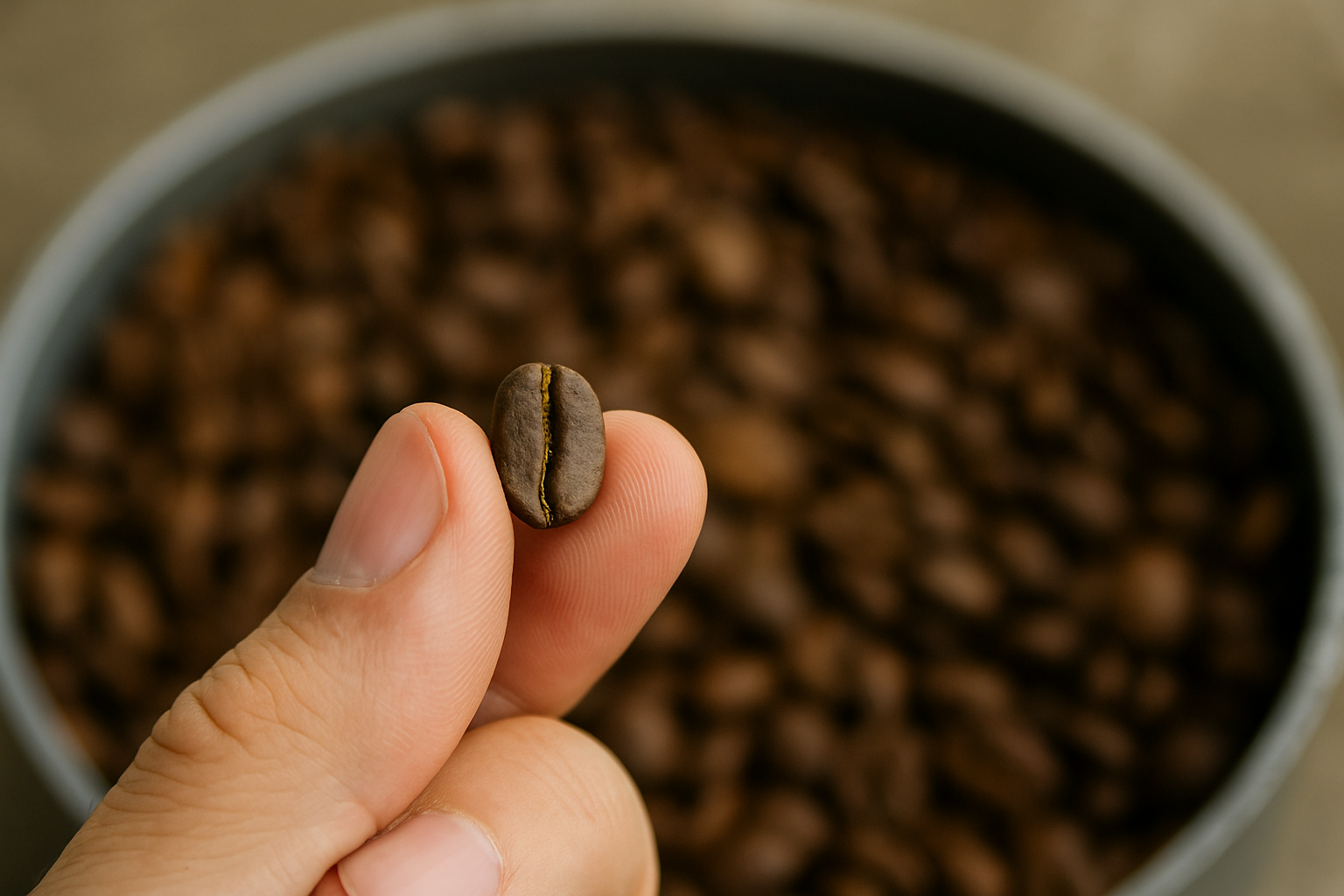For anyone aspiring to become a barista, learning how to identify high-quality coffee beans is one of the most valuable skills you can develop.
Whether you’re selecting beans for a pour-over, dialing in espresso, or curating a coffee menu, your ability to choose the right coffee starts with knowing what makes a bean “specialty.”
High-quality beans don’t just appear in beautiful packaging. They are the result of precise cultivation, harvesting, processing, and roasting.
In this guide, you’ll learn how to evaluate coffee beans using professional criteria and sensory skills that set expert baristas apart.
What Makes a Coffee Bean “High-Quality”?
The term “high-quality” in coffee usually refers to beans that meet specialty-grade standards. According to the Specialty Coffee Association (SCA), these beans must score at least 80 points on a 100-point scale in a formal cupping session.
But beyond numbers, high-quality beans are those that exhibit clarity in flavor, balance, sweetness, cleanliness, and a distinct character that reflects their origin.
As a barista, your job is not only to brew the coffee well but to choose beans that are worth brewing in the first place.
1. Bean Shape and Size
Start with a visual inspection. Uniformity in size and shape is a good indicator of careful harvesting and sorting. Specialty beans are usually hand-picked and sorted to ensure consistency.
Irregular shapes, broken pieces, or extreme variations in size can indicate poor processing or mixed varietals. While not always a deal-breaker, they often point to lower quality.
Also, check for quakers — pale or underdeveloped beans. These will roast poorly and create flat or papery flavors in the cup.
2. Color and Roast Consistency
Before grinding, examine the roast. High-quality beans should have an even color, whether light, medium, or dark roasted. Uneven coloring or visible oil spots may indicate inconsistent roasting.
In specialty coffee, light to medium roasts are often used to highlight the origin flavors. These roasts should appear dry and uniform. Dark roasts may have slight oil sheen, but excessive oil suggests over-roasting.
If the beans smell burnt or look glossy, they may be past their peak or roasted too aggressively.
3. Aroma of Whole Beans
Smell the beans. High-quality coffee beans give off a fresh, fragrant aroma that can include notes of chocolate, fruit, flowers, or spices.
A dull, musty, or cardboard-like smell could mean the coffee is stale or was stored improperly. Aroma is the first sign of freshness and complexity — two hallmarks of specialty coffee.
Use your nose as a tool. If the beans excite your senses even before grinding, they’re probably worth brewing.
4. Roast Date and Freshness
Freshness is critical in high-quality coffee. Always check the roast date — not an expiration date.
Coffee is best consumed between 4 and 30 days after roasting. Before 4 days, gases from roasting may interfere with extraction. After 30 days, flavor degradation becomes noticeable.
If the packaging doesn’t list a roast date, that’s a red flag. Specialty roasters are proud of their freshness and usually share this information transparently.
5. Origin and Traceability
High-quality coffee comes with a story. Look for beans that list the origin country, region, farm name, altitude, and even the varietal of the coffee plant.
The more detailed the label, the more likely you’re buying coffee that was ethically sourced and carefully produced.
Single-origin coffees — beans sourced from one farm or region — are often associated with higher quality. They allow you to taste the unique flavors of that place, like citrus from Ethiopia or chocolate notes from Colombia.
As a barista, understanding these origin characteristics helps you talk confidently with customers and choose beans that suit different brewing methods.
6. Processing Method
Coffee processing refers to how the fruit is removed from the bean after harvest. The three most common methods are:
- Washed (Wet Processed): Clean, bright flavors with higher acidity.
- Natural (Dry Processed): Fruitier, heavier body, sometimes funky or fermented notes.
- Honey (Semi-Washed): A balance of sweetness and clarity.
Knowing how a coffee was processed gives you insight into how it will taste and what brew method will suit it best.
For example, naturals shine in immersion methods like French press, while washed coffees are great for pour-over.
7. Tasting the Coffee: Flavor, Acidity, Body, and Balance
The most important test of quality is in the cup. When you taste coffee, pay attention to:
- Flavor: Are there distinct notes like fruit, chocolate, or spices?
- Acidity: Is it pleasant and bright, or sour and harsh?
- Body: Does it feel light, medium, or full in your mouth?
- Balance: Do the flavors work together smoothly?
High-quality coffee will have a clean finish, defined flavor notes, and no off-tastes. It should leave a pleasant aftertaste that lingers in a good way.
Practice tasting regularly to develop your sensory memory and identify quality faster.
8. Clean Cup and Sweetness
Two often-overlooked markers of high-quality beans are cleanliness and sweetness.
A clean cup has no muddiness, mold, or lingering harshness. Sweetness doesn’t mean sugary — it means the coffee has a natural roundness and depth, like ripe fruit or caramel.
These are signs of excellent growing, careful processing, and a well-executed roast.
As you train your palate, you’ll start to notice that the best coffees feel “pure” and leave no unpleasant notes behind.
9. Packaging and Storage
Specialty coffee often comes in high-quality packaging designed to preserve freshness. Look for:
- Valve-sealed bags to release carbon dioxide without letting oxygen in.
- Opaque or resealable bags to block light and moisture.
- Information-rich labels detailing everything from roast profile to brewing suggestions.
Once opened, store beans in an airtight container, away from light and moisture. Even great beans lose quality quickly if not stored properly.
10. Working With Roasters
If you’re training to be a barista, don’t hesitate to build relationships with local or specialty roasters. Many offer cupping sessions, origin talks, and education about bean selection.
Ask them questions. What makes this coffee special? What flavor notes are you aiming for? How was it processed?
The more you learn from the source, the better you’ll be at choosing, brewing, and serving exceptional coffee.
Common Mistakes When Evaluating Coffee Quality
Even experienced baristas sometimes rely too heavily on packaging or brand reputation. Don’t assume all “third wave” coffees are good — taste and test for yourself.
Avoid choosing coffee based only on roast level. While roast affects flavor, it doesn’t guarantee quality. A well-roasted bad bean is still a bad cup.
Lastly, don’t judge too quickly. Some flavors reveal themselves as the coffee cools or after multiple brews. Give each bean a chance to speak.
Choosing Beans for Different Brewing Methods
Not all high-quality beans are ideal for every brew method. Here’s a quick guide:
- Espresso: Look for beans with balanced acidity and full body. Medium roast works well.
- Pour-over: Light to medium roast with bright acidity and clear flavors.
- French Press: Medium to dark roast with heavier body and rich notes.
- Cold Brew: Beans with chocolate or nutty profiles and low acidity.
Match the bean’s character to the brew method for the best results. This shows mastery and care in your craft.
Why This Matters for Aspiring Baristas
Choosing high-quality coffee beans is one of the first decisions you make in the coffee-making process. Everything else — grind size, water temperature, extraction time — depends on starting with a great product.
Your ability to identify quality affects:
- The flavor of every cup you serve.
- Your professional credibility.
- The reputation of the café you represent.
Customers may not know the difference between washed and natural or Arabica and Robusta — but they will know when the coffee tastes good. Your knowledge makes that possible.
Final Thoughts: Let the Beans Speak
High-quality beans don’t just taste better — they tell a story. From the soil where they were grown to the method used to dry them, every step affects the flavor in your cup.
As an aspiring barista, developing the skill to identify and evaluate these beans gives you a professional edge. It turns brewing into artistry and service into education.
So next time you’re faced with a bag of beans, don’t just read the label. Look, smell, taste, and listen. Let the coffee speak — and learn to understand what it’s telling you.

Marcelo Rodrigues is a passionate barista with over 7 years of experience in specialty coffee. He’s worked in top cafés, led barista training sessions, and now shares practical tips to help beginners and coffee lovers improve their skills. Through this blog, Marcel makes the world of coffee more accessible—one cup at a time.

